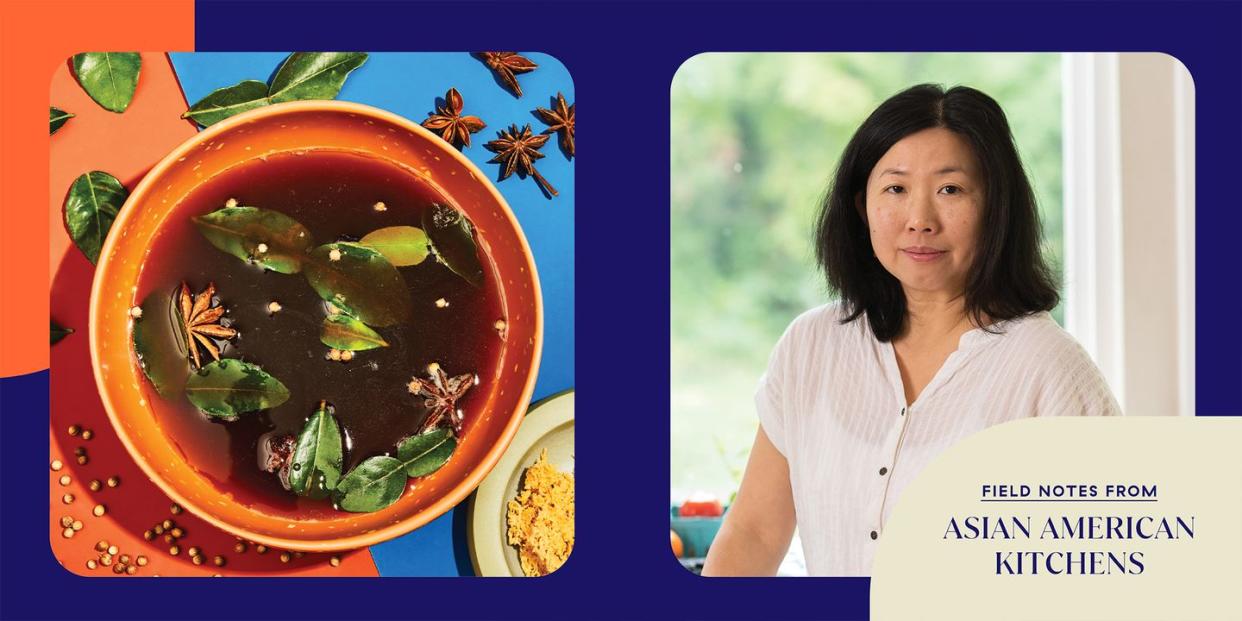No One Loves Kecap Manis Like My Dad

I remember many things about my dad from my childhood: his quirky sense of humor, piggyback rides in the park, and ebony, Brylcreemed hair that gleamed in the sun. Dad was also full of -isms and quotes that he spouted in all three languages he speaks—Indonesian, Dutch, and English. He used them to teach us about life, and to reminisce about his past.
And then there’s this odd one: “You can’t argue with taste.” I have a feeling Dad invented this saying in defense of his favorite condiment—kecap manis, Indonesian sweet soy sauce.
Kecap manis is considered Indonesia’s national condiment, a must-have in the kitchen and on the table. It flavors the ubiquitous nasi goreng (Indonesian fried rice), and is added to popular dishes like semur (beef stew) and babi kecap (pork braised in soy sauce). Kecap manis is also used as a dipping sauce for everything from fried fish to emping, traditional crackers made from the melinjo nut.
Without a doubt, soy sauce and fish sauce are Chinese imports to Indonesia, but kecap manis is undeniably an original Indonesian product. According to oral history, the first Chinese settled in Indonesia during the Airlangga Kingdom (1019-1045). However, soy sauce production was only recorded in the 19th century, and in cities with sizable Chinese migration. Chinese settlers in Java probably realized their hosts had a sweet tooth and created a new seasoning combining a native ingredient—palm sugar—with their age-old soy sauce.
It’s true that Indonesian kecap manis combines soy sauce extracted from black soybeans and palm sugar—and comprises more sugar than soy. The ratio is 10 to 15 percent liquid soy sauce, and the rest is sugar, water, and herbs and spices.
While the sauce quality is largely dependent on the soybeans and palm sugar used, the addition of more palm sugar makes the sauce thicker and darker. Hence a thicker and darker liquid is perceived to be of better quality. Dad’s favorite brand, Bango, is a case in point.
Like magic, the red-capped bottle with a turquoise label appears on the dining table at meal times. Thankfully, it’s easily decanted into a travel-size container, perfect for tucking away snugly in Dad’s man bag for those trips away from home.
I’ve always been curious about Dad’s kecap manis obsession. I knew the answers had to lie somewhere in his childhood. This past summer, I had planned to travel back to Indonesia with both my parents to discover more about their pre-married lives. Unfortunately Dad wasn’t up to the almost 20-hour flight. So I took the opportunity to ask questions instead.
Dad was born in 1939, just before World War II, the second oldest of nine siblings. He survived the hardships of the Japanese Occupation—his father (my opa) was interned and his mother (my oma) struggled to feed the family, selling snacks and cakes at the market to make ends meet. But there were happy memories too: catching betta fish in the rice fields, hitching rides on Dutch army trucks, and flying homemade kites with his brothers.
According to Dad, meal times were chaotic. My oma was always cooking for a crowd, so easy one-pot dishes like babi kecap (pork braised in sweet soy sauce), bak kut (pork ribs and salted vegetable soup), and gado gado Cirebon (vegetables and chicken with peanut sauce and curry) were the norm. He and his siblings had to fight for choice cuts. If you were slow, all you’d get to eat were the scraps.
I would think that if you had to cook for that many children every day, you’d probably give up on trying to make the food tasty. To make meals palatable, Dad reached for the bottle of kecap manis that was always on the table. It's no wonder he developed a habit of pouring kecap manis over everything.
And when I say everything, I mean everything. Having been raised on an exclusive diet of Indonesian and Chinese food, he’s not a huge fan of any other type of cuisine. Dad’s solution when he’s forced to eat anything else? Squirt kecap manis over pizza and stir puddles of the dark, viscous sauce into his paella.
One of the few “foreign” dishes my dad will eat willingly is a kecap manis-marinated steak called bistik Jawa. Bistik Jawa is the Javanese adaptation of European beefsteak. My mom’s version comprises thin slices of marinated beef steak served with a buttery kecap manis gravy spiked with nutmeg, and roast potatoes, carrots, and green beans as sides. No points for guessing why Dad likes it.
At 83 years old, Dad may forget that it’s time to eat his lunch, but he won’t forget to put kecap manis on it. Due to the natural process of aging, he has lost most of his sense of smell and taste. He probably can’t tell salty from sweet, let alone umami. But there he goes, pouring kecap manis over everything on his plate at every meal. And when he inevitably says, “You can’t argue with taste,” I just shake my head and smile.

You Might Also Like

